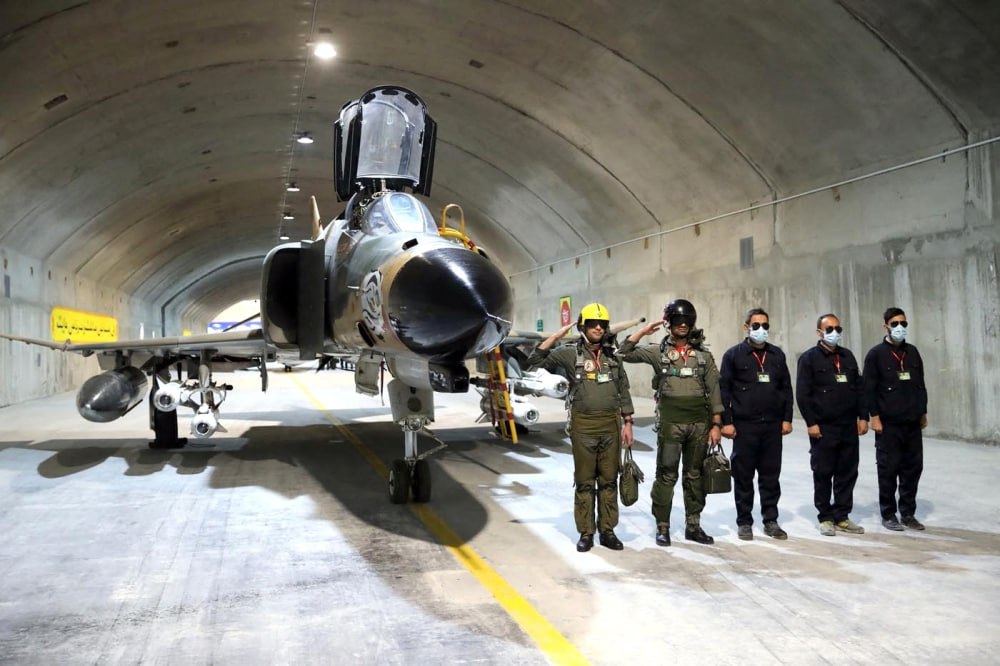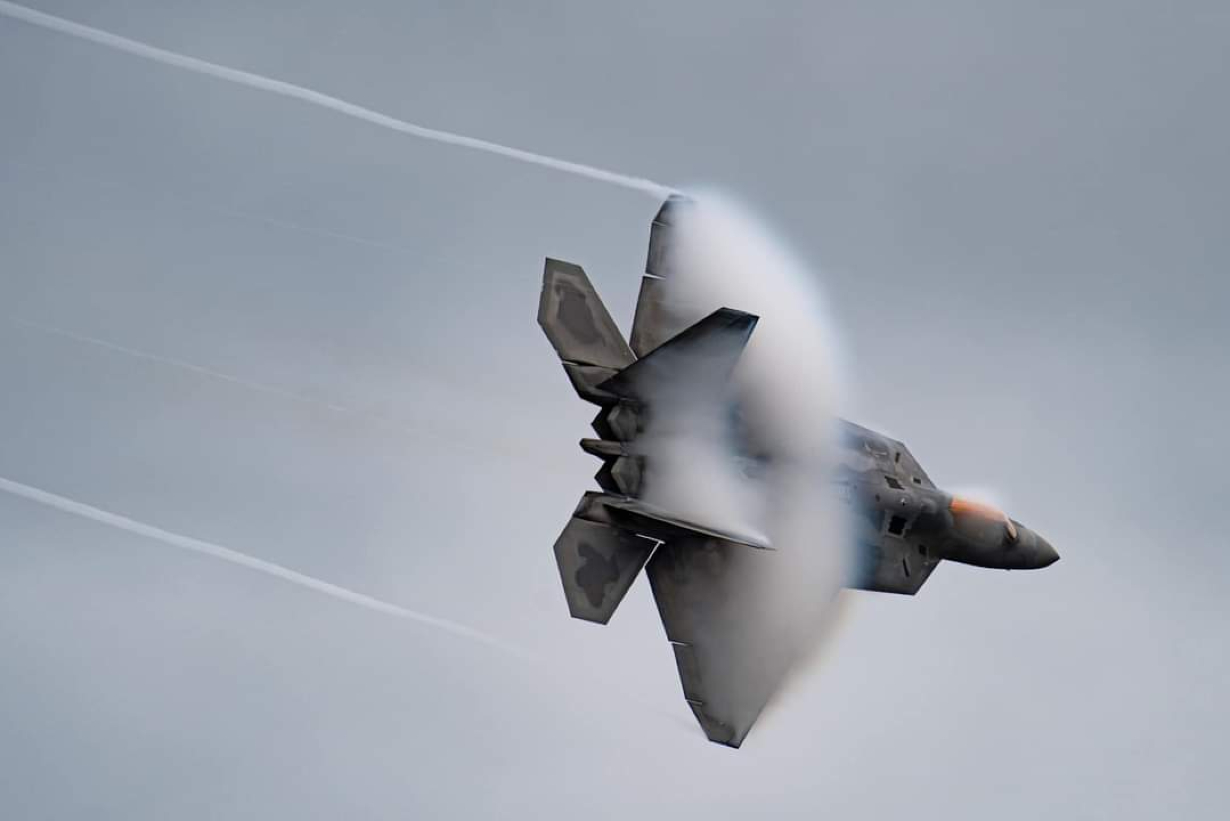In the opening sequence of “Top Gun,” a naval aviator flies upside down about 18 inches above a Russian-built MiG and clicks a Polaroid picture of the enemy pilot before peeling off. The movie was an ode to naval fliers, but in real life, the US Air Force pilot did something similar and ‘Mavericked’ an Iranian Air Force’s F-4 Phantom fighter jet.
The first 5th generation fighter aircraft known for its stealth was escorting an MQ-1 drone on a reconnaissance mission just miles outside the Iranian border in 2013 when two Iranian Air Force (IrAF) F-4 Phantoms moved to intercept it.
Fighter jets escorting the drones became a standard operating procedure after two Sukhoi Su-25 attack planes operated by the Iranian Revolutionary Guards tried to shoot down an American MQ-1 flying a routine surveillance flight in international airspace some 16 miles off Iran.
The Iranians –unaware of the new US drone-escort policy – tried to engage another MQ-1. However, this time, the Iranians sent the F-4 Phantom – an aircraft the US exported to Iran in the 1970s. Unlike the Su-25, the F-4 was capable of bringing down the MQ-1. But when the Iranian F-4s were up for a surprise, they had company.
The F-22 had not made its formal combat debut till then. The high-speed, stealthy F-22 could track and get beneath the Iranian F-4s undetected. The incident underscored the Raptor’s stealth capabilities.

F-4 Did Not Stand A Chance Against F-22
Back in 2013, Pentagon press secretary George Little said that an Iranian Air Force F-4 Phantom combat plane tried to shoot down an MQ-1 Predator drone flying through international airspace. The F-4s came 16 miles from the Predator but ditched the pursuit after two American planes issued a warning message.
Details were withheld at that time due to security reasons. Later, former US Air Force Chief of Staff Gen. Mark Welsh. General Welsh told reporters that the fighter jet (F-22) was providing “HVAAE (High-Value Air Asset Escort) for the drone, which had come under attack.
On September 17, 2013, the general not only confirmed that the escorting fighters were F-22 stealth fighters but also said that: “He [the Raptor pilot] flew under their aircraft [the F-4s] to check out their weapons load without them knowing that he was there, and then pulled up on their left wing and then called them and said ‘you really ought to go home,’” according to an essay in the Aviationist.
After Sukhoi-25’s attempt to shoot at the ‘Predators,’ the Pentagon escorted the drones on reconnaissance missions with fighter jets – either F-18 Hornets embarked on the aircraft carrier USS John C. Stennis or F-22 Raptors deployed to Al Dhafra in the United Arab Emirates.

If the episode went exactly as Welsh described it, it was something more similar to Tom Cruise’s ‘Maverick’ close encounter with Russian MiG-28s in Top Gun.
Welsh also provided other specific details about the incident. Apparently, the F-22s use advanced vectoring capabilities and “stealth” to intimidate and warn the Iranian 4th-generation aircraft of American origin. The F-22 made its combat debut against the Islamic State in 2014.
The encounter with the Iranian jets suggested that the combination of stealth, speed, and intense maneuvering gives the F-22 an unparalleled advantage when it comes to air superiority. Given that the F-22 was able to surprise the F-4s by getting into the position undetected, it reinforces its stealth capabilities.
Retired Air Force Col. Terry “Stretch” Scott found that out during his time flying the F-22 Raptor, the Air Force’s fifth-generation fighter designed to kick down the door of enemy air defenses.
The F-22 was designed to replace the F-15 as the US Air Force’s premier air superiority fighter. The plane is not just agile, it’s sneaky too. With advanced sensors, the Raptor can detect threats from far away, while its stealthy shape and materials allow it to sneak up undetected on those threats. Its super-cruise ability allows it to sneak faster than threats can react, and, with its thrust vectoring capability, it can out-maneuver any opponent within visual range.
The F-22’s stealth design drastically reduces its radar cross-section (RCS) and infrared signature through airframe shaping, radar-absorbent materials, and other advanced techniques. To further enhance its stealth capabilities, the F-22 has undergone further upgrades over the years, such as a new chrome-like surface coating that reduces infrared tracking.
The End Of Road For F-22
The US Air Force had originally planned to buy 750 Raptors, but the US Congress wanted the numbers dropped to 339 in the 1990s.
The jet became operational in 2005, right as the global war on terror started. The case for an expensive, stealthy, air-to-air platform became more difficult to argue when America’s most urgent enemies fought with homemade roadside bombs, not integrated air defense systems.
By the beginning of the 2010s, the US Congress had capped the total fleet of Raptors at 187, and the production of planes had been shut down.
The Lockheed Martin F-22 Raptor’s design combines stealth technology and sensor fusion, creating a formidable platform for counter-air operations. With a top speed of more than Mach 2 with afterburners and Mach 1.8 at military power, the F-22 boasts high cruise speeds and operating altitudes, enhancing sensor and weapon system effectiveness while increasing survivability against ground defenses.
- Ritu Sharma has been a journalist for over a decade, writing on defense, foreign affairs, and nuclear technology.
- The author can be reached at ritu.sharma (at) mail.com
- Follow EurAsian Times on Google News




